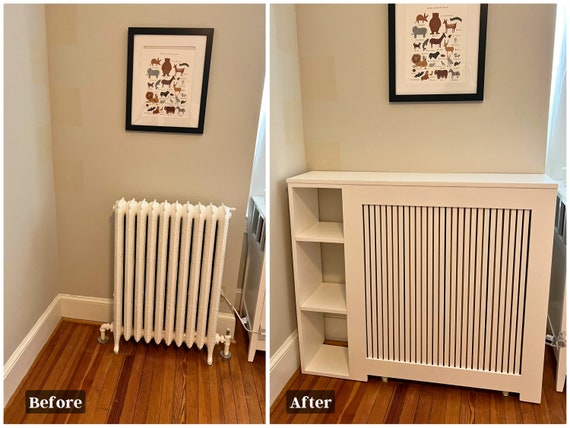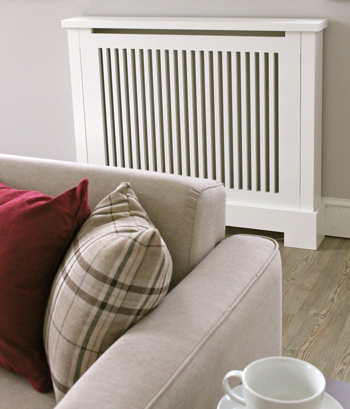Not known Facts About Radiator Covers
About Radiator Covers
Table of ContentsHow Radiator Covers can Save You Time, Stress, and Money.Radiator Covers - The FactsThe Definitive Guide for Radiator CoversSome Of Radiator CoversFascination About Radiator CoversSome Of Radiator Covers
Hayden composed, "Radiators are a great source of heat, however they also take up important square footage ...They may be might radiators, but they should probably be most likely convectors, since the considering that of mass heat that warmth get from a traditional rad is moved by convection. In convection, air warmed between the fins of the radiator increases to the ceiling and is pressed around the space in a circle.
About Radiator Covers
Hayden wrote, "Radiator covers with the appropriate backing can distribute heat much more effectively than an uncovered radiator. Instead of the heat going straight to the ceiling, the back permits it to be pushed into the living area." Lloyd Alter It is true that radiators should have a correct reflective support; I utilize foil-faced bubble wrap insulation; it reflects a little of the radiated warm that would have been soaked up by the wall surface back into the room and the radiator.
Radiator covers can be useful in older structures created after the influenza epidemic of 1918 - radiator covers. As is the situation currently, wellness authorities believed that fresh air was the means to avoid obtaining illness and that individuals must sleep with open windows. Dan Holohan creates in "The Lost Art of Steam Home Heating" that in New York City, the Board of Wellness bought that home windows must stay open constantly, and the radiators were made to keep buildings warm on the chilliest day of the year with the home windows open
All about Radiator Covers
Some radiators, like copper finned modern-day rads, included essential covers, frequently with dampers to readjust the convection; they, like heavy steam rads, require covers because they are also hot to touch. For a traditional cast iron rad that one finds in old residences, connected to a hydronic system, a cover isn't needed for safety and security.
In a current article, Holohan kept in mind that some radiators can get alarmingly warm. He described a lawsuit where a child rolled off the bed and got stuck between the radiator and the bed and experienced severe burns. He wrapped up, "If I was a proprietor, I would certainly cover all the radiators in the apartments that had little ones living there.
As a common home heating appliance, radiators are not there simply to look quite but to keep your home warm making use of all-natural convection. Nonetheless, with even more focus on indoor design, these devices can show unattractive and distract from the remainder of the thoroughly plotted aesthetics of an area. To straighten a radiator to the style of the rest of your room, you can cover one up though this does include implications for the home heating.
A radiator cover is essentially a means of covering up a radiator to cover it from sight (radiator covers). Wood is thought about the most typical material for a radiator cover as it just looks far better.
What Does Radiator Covers Do?

Not just can they childproof the appliance and include a cosmetically pleasing design, but a radiator cover can likewise include extra storage space, especially in the washroom. With a flat surface, you must have the ability to store soaps and scents to maintain them within very easy reach. By repurposing the room, the radiator cover can become a makeshift mantelpiece.
That is absolutely the instance with radiator covers and they can restrict the performance of your main furnace. By interrupting the circulation of warm air and the natural convection, you can suffer heat loss and like it grab the thermostat when you truly must not have to. Successfully, a radiator cover can cost you cash by exceedingly spending on heating you are not delighting in.
Examine This Report about Radiator Covers
These consist of hemorrhaging the radiators, applying reflective support, and maintaining a gap for the radiator. A lot of households need to be hemorrhaging their radiators at the very least when a year.
Radiators function by natural convection, as cool air sinks to the bottom of the wall surface, it enters into contact with the radiator then warms up and increases as the air ends up being less thick. The cozy air efficiently my explanation warms up a room. However, if you were to place items beside the radiator, such as a sofa, or border one with a radiator cover, after that this would certainly interfere with the natural convection and you would certainly not be able to feel the full benefits of the heating.
Radiator covers may be a great alternative if you have young kids running about and need a method of stopping them from shedding themselves on the hot surface. While a cover ought to look great to conceal a radiator, any product that blocks a home heating device will decrease its performance. To offer a total style, the radiator cover should go over the valves, in addition to the heater and pipelines.
Little Known Facts About Radiator Covers.

Which my inquiry: exactly how do I tackle determining if my radiators should have covers? I have a good friend that believes the concern is straightforward: a cover traps the heat, so getting rid of the cover will certainly allow the warmth to much better go into the room and will certainly make the radiator much more efficient.
And thats my question: just how do I tackle determining if my radiators should have covers? I have a friend who believes the problem is simple: a cover catches the warm, so eliminating the cover will certainly enable the heat to much better get in the space and will make the radiator a lot more efficient.
Which my inquiry: exactly how do I set about finding out if my radiators should have covers? I have a pal that thinks the concern is basic: a cover traps the warm, so removing the cover will permit the warmth to better go into the space and will make the radiator extra efficient.